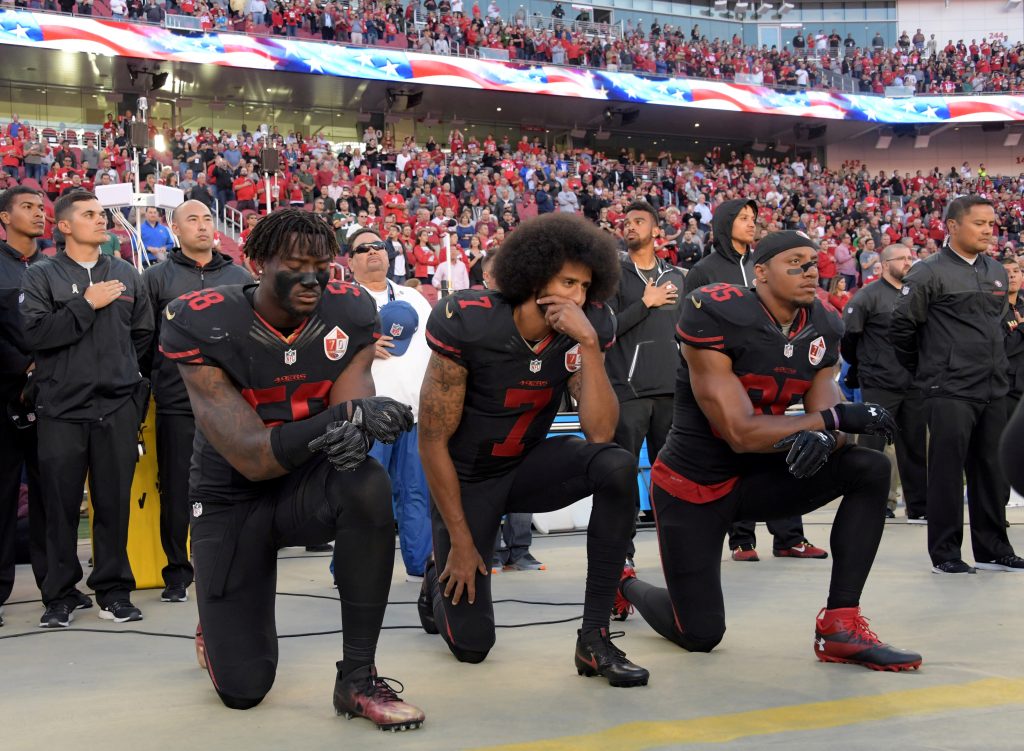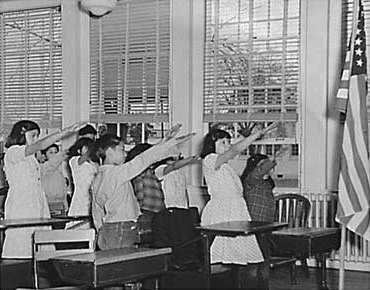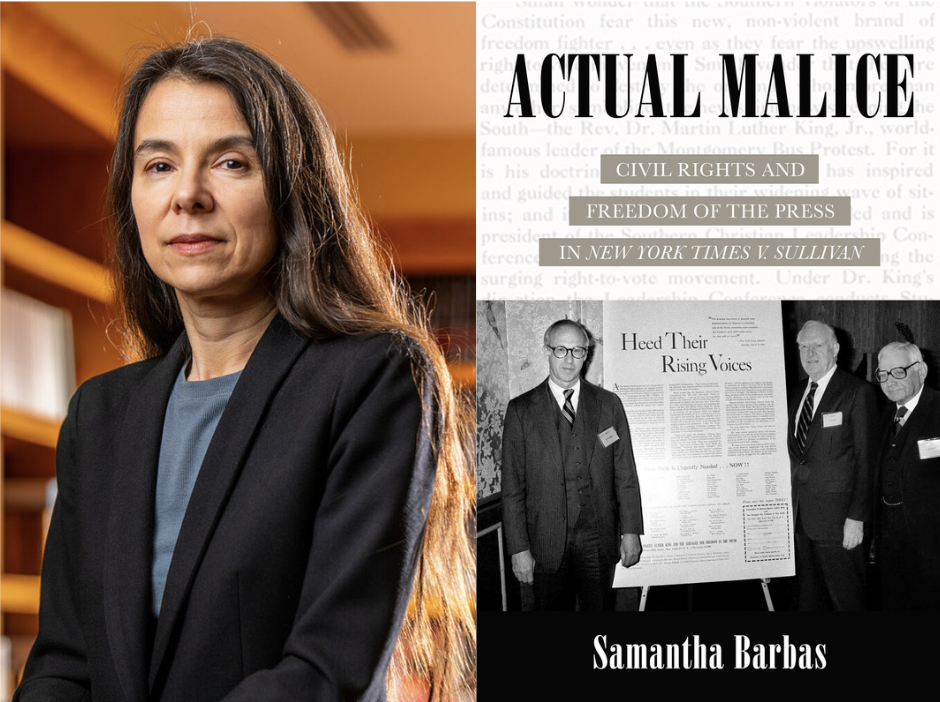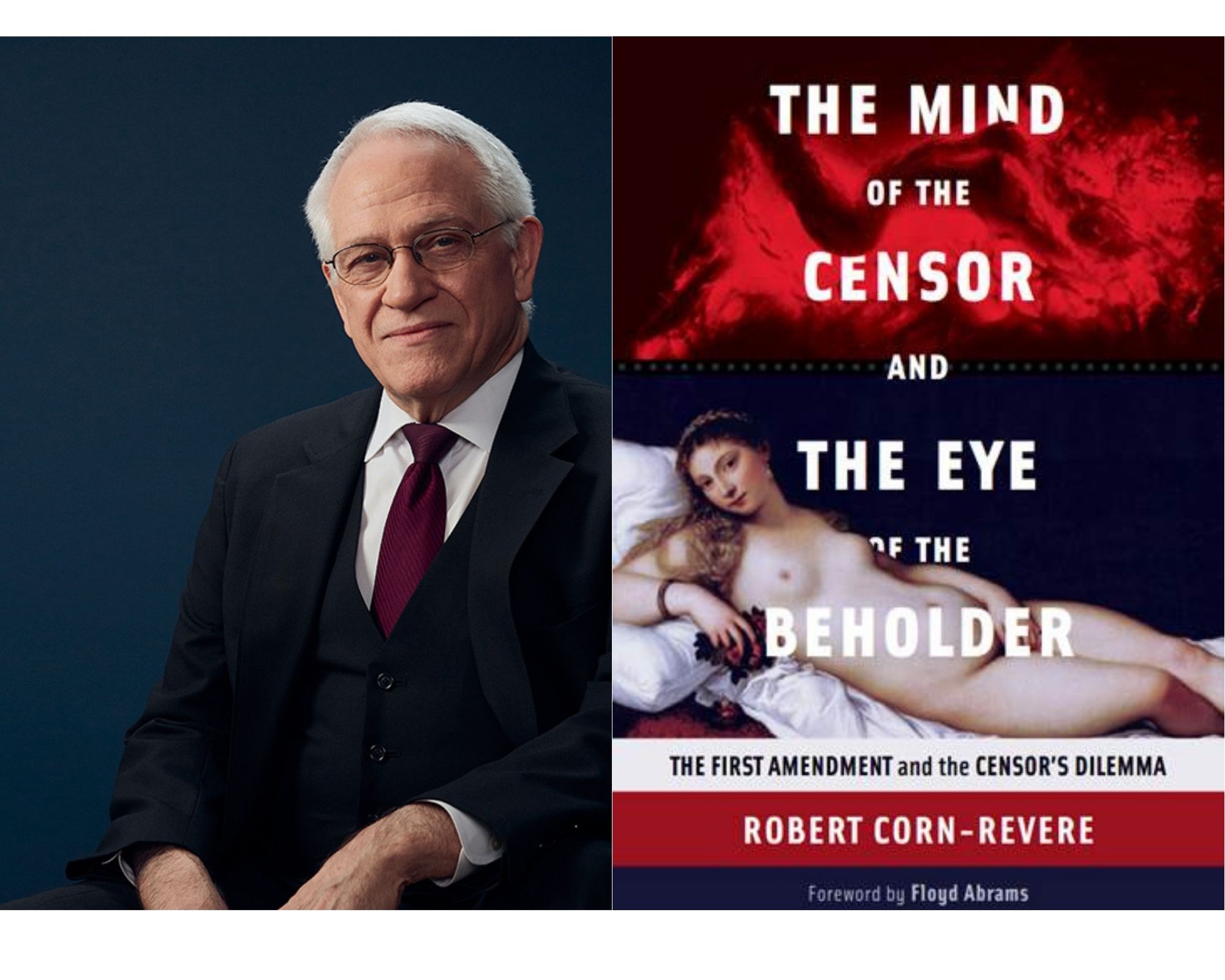In The First Amendment in the Trump Era, Timothy Zick catalogs and analyzes the various First Amendment conflicts that have occurred during Donald Trump presidency. It places these conflicts in historical context–as part of our current digitized and polarized era but also as part of a broader narrative concerning attacks on free speech and press. We must understand what is familiar in terms of the First Amendment concerns of the present era, but also what is distinctive about these concerns. The Trump Era has once again reminded us of the need for a free and independent press, the need to protect robust and sometimes caustic criticism of public officials, and the importance of protest and dissent to effective self-government.
Read our Q&A with Timothy Zick about The First Amendment in the Trump Era here.
Timothy Zick is a John Marshall Professor of Government and Citizenship at William and Mary Law School where he teaches courses on constitutional law and the First Amendment. He is the author of Speech Out of Doors: Preserving the First Amendment Liberties in Public Places (2009), The Cosmopolitan First Amendment: Protecting Transborder Expressive and Religious Liberties (2014): and The Dynamic Free Speech Clause: Free Speech and its Relation to Other Constitutional Rights (2018). Professor Zick has been a frequent commentator on First Amendment issues in local, national, and international media. In 2012, he testified before a U.S. House of Representatives subcommittee regarding the First Amendment rights of Occupy Wall Street protesters.

Authors Share Excerpts on Free Speech:
Timothy Zick The First Amendment in the Trump Era
Excerpted from The First Amendment in the Trump Era by Timothy Zick, published by Oxford University Press. Copyright © 2019 Timothy Zick 2019. Used by arrangement with the Publisher. All rights reserved.
Excerpted and adapted from Chapter 3, “The Anti-orthodoxy Principle”
The president and other government officials may and frequently do weigh in on the social and political controversies of the day, and their opinions can add significant information to the marketplace of ideas relating to such matters. Although they are generally free to speak their minds, governments cannot coerce others to adopt or convey their official positions. Thus, they may not compel or command individuals to communicate viewpoints the government favors but the speakers do not personally hold. Nor can governments punish individuals for expressing viewpoints that differ from the government’s own.
It is a bedrock First Amendment principle that with regard to politics, religion, patriotism, and other matters, governments cannot insist on the adoption or expression of any official orthodoxy. Thus, no official can force us to believe what is not in our hearts, or put words in our mouths. This “anti-orthodoxy principle” protects speakers’ autonomy and their right to dissent. It also facilitates self-government and the search for truth by protecting speakers from official coercion with regard to ideas, opinions, and beliefs.
The anti-orthodoxy principle is a product of the historical repudiation of variety of coercive measures, including laws mandating flag salutes, protecting the American flag and other symbols of nationhood from “desecration” and disrespect, and laws requiring the execution of coercive “loyalty oaths.” The anti-orthodoxy principle has long protected political, religious, and other forms of public and private dissent.
The Trump Era has raised new concerns about efforts to coerce official orthodoxies. These concerns have centered on conflicts involving flag burning, the National Anthem, and the Pledge of Allegiance, but they are part of a broader agenda to insist upon official conceptions of nationalism, patriotism, and religion.
Flag, Fealty, and Faith

U.S. President Donald Trump points to a large “Merry Christmas” card on the stage as he arrives to deliver remarks on tax reform in St. Louis, Missouri, U.S. November 29, 2017. REUTERS/Kevin Lamarque
The Trump Era has once again placed “nationalism” front and center in our political discourse. The president’s “America First” agenda is presumably a manifestation of his personal and official views concerning patriotism and loyalty to government and country. Like his predecessors, President Trump has praised members of the armed forces, first responders, and immigration enforcement officers. At public rallies and on social media, the president has frequently proclaimed his “love” for the United States.
He has also criticized and demonized immigrants, refugees, and Islam—all, not coincidentally, persons or faiths associated with foreign nations. He has questioned the loyalty of Americans who do not adhere to official orthodoxies concerning nationalism, patriotism, and religion. He has also insisted on “loyalty”— a concept that has deep roots in anti-dissent campaigns of the past. As interactions with various aides and critics show, the president places a high value on loyalty or fealty to himself and the administration, which serve for him as a proxy for loyalty to the nation.
“Today, many Americans view those who prefer ‘Happy Holidays’ to ‘Merry Christmas’ or object to references to God as part of a national creed as aligned not just against Christianity or faith but also the United States.”
As a candidate and later as president, Trump has also expressed the view that people should more frequently, vocally, and publicly recognize and praise God. He has made a point of saying that Americans ought to say “Merry Christmas” to one another during the holidays (apparently in the mistaken belief that this is not already routinely done). Indeed, he has insisted that they are actually doing so to a greater extent during his presidency than during his predecessor’s. The president has also focused special attention on the words “under God” in the Pledge of Allegiance. In public appearances and on social media, he has opined that those words deserve special emphasis.
Governments and public officials have long expressed similar sentiments. Presidents, in particular, often express strong feelings about matters of patriotism, loyalty, and faith. However, the First Amendment prohibits officials from taking a more coercive approach to nationalism and other subjects.
Take, for example, President Trump’s suggestion that individuals who burn the U.S. flag in protest should be jailed and de-naturalized. That would plainly amount to imposing sanctions for making a political statement at odds with the government’s own views about the flag. Under longstanding First Amendment precedents, this would be patently unconstitutional.
President Trump has also suggested that National Football League players who have taken a knee during the playing of the National Anthem and the display of the U.S. flag should be subject to punishment for doing so. As the players have explained, they are not protesting the flag, the nation, or the U.S. military. Rather, they are seeking to draw attention to social justice issues, including what they view as a form of police brutality—in particular, incidents in which police officers have shot and killed unarmed African Americans. By contrast, President Trump has consistently characterized these protests as unpatriotic and disloyal. He has criticized athletes for being ungrateful, apparently owing to the financial and other successes they have enjoyed by virtue of their talents. The president has argued that the protests demonstrate “disrespect” for the National Anthem, the flag, and the nation’s military. He has publicly branded those who disagree as disloyal and unpatriotic.
In this dispute, the president has come close to crossing, if he has not in fact stepped over, the First Amendment line separating expression of his views on the matter from unlawful official coercion. During a public rally, he suggested that team owners should respond to the protests by saying, “Get that son of a bitch off the field right now. Out! He’s fired. He’s fired!” The next day, President Trump tweeted that the players should stand for the anthem or “YOURE FIRED. Find something else to do!” In comments directed to NFL owners, he said that they “should change their policy” allowing the protests, that they “must respect” his view that the protests were offensive, and that they should “fire or suspend” the kneeling players. He also called for a public boycott of NFL games, at least until the protesting players were fired or suspended. Several months later, the NFL announced a new policy of fining teams if their players kneeled during the anthem.
President Trump has not made the same coercive overtures regarding religious expression. However, he has implied that America will be “great again” only when its people greet each other in a certain manner during the holidays and stop questioning the inclusion of references to God in the National Anthem.
“It is no small thing for the president of the United States to publicly advocate that political dissidents be jailed and denaturalized.”
During the Trump Era, several conditions have contributed to renewed pressure to conform to the government’s views on matters such as patriotism and faith. As noted, the president was elected based on an “America First” political and policy agenda. That agenda trades heavily on nationalism, ideas about appropriate displays of patriotism, and the “invasion” of foreign persons, ideas, and religions. Flags and faith are effective unifying forces, particularly for political bases. Without a war to rally around, governments rely on such symbols as means for stirring up feelings of nationalistic pride.
Indeed, even the apparently religious agenda described earlier may actually be based on a form of political nationalism. President Trump has vocally courted and strongly identified with evangelical voters. A recent study suggests that religious groups are not the primary target audience for the “Merry Christmas” and “under God” parts of the Trump orthodoxy agenda. Rather, the study concludes that the president’s focus on faith is actually part of the same nationalism agenda that is associated with the slogan “Make American Great Again.” Thus, in the Trump Era, the “War on Christmas” is less about Christianity than it is about a form of cultural or political dominance.
The general political climate has also contributed to the revival of this agenda. The notion that those with whom one disagrees ought to be “locked up” hearkens back to periods when governments did indeed jail and treat as “un-American” those who dissented from official policies and sentiments. Today, many Americans view those who prefer “Happy Holidays” to “Merry Christmas” or object to references to God as part of a national creed as aligned not just against Christianity or faith but also the United States.
The Trump Era seems to have brought a new edge and urgency to these matters, even in a time of relative peace. Many Americans support President Trump’s position that kneeling during the anthem is disrespectful and unpatriotic. NFL fans threatened to boycott the league over the player protests. In Indiana, a state legislator proposed a law that would have entitled fans to a refund if they attended a game at which players silently protested during the National Anthem. And when Nike made Colin Kaepernick, who initiated the NFL protests, the face of its most recent marketing initiative videos appeared on social media showing owners of Nike sneakers burning the shoes (sometimes while still wearing them!) in protest.
Officials have also again weaponized faith as a partisan wedge issue. Even seemingly petty matters such as what counts as a proper season’s greeting cause conflict and consternation. Religious adherents believe they are under siege and marginalized in the political community, while those who urge separation of church and state likewise feel their principles are under attack. Like politicians before him, President Trump has positioned himself to take political advantage of these divisions. Indeed, he has exploited and exacerbated them.
It is no small thing for the president of the United States to publicly advocate that political dissidents be jailed and denaturalized. That the “leader of the free world” would publicly advocate that position ought to alarm freedom- and flag-loving Americans of all political persuasions. Yet in the Trump Era, such statements tend to get buried in the avalanche of news or laughed off, much like the president’s public musings about Christmas greetings. These are serious matters, and they deserve serious attention.
Even if they are not jailed or arrested, demonizing flag-burners may lead to their arrest for other offenses or to vigilante violence. Flag burning is an unpopular form of dissent, and branding it “un-American” or even treasonous will have ramifications for those who engage in it—whether or not any law on the books prohibits the flag’s desecration. Insisting on personal fealty or political loyalty also has negative effects on the political climate and the culture of dissent. Religious adherents, agnostics, and atheists are affected personally and culturally by an official orthodoxy agenda that chooses sides with regard to matters of faith.
The Constitution’s “Fixed Star”

Punks burning a U.S. flag (early 1980s). Wikimedia Commons.
Official efforts to compel patriotic and nationalistic displays are not a new phenomenon. Governmental agendas to compel unity and punish dissent have been distressingly common.
In 1943, the Supreme Court dealt a fatal blow to laws seeking to impose an official orthodoxy regarding the U.S. flag and nationalism. In West Virginia State Board of Education v. Barnette, the Supreme Court invalidated state laws mandating that public school children salute the U.S. flag and recite the Pledge of Allegiance as part of a daily school ritual.
Three years earlier, in 1940, Minersville School District v. Gobitis had upheld the same compulsory flag exercises. Writing for the Court in Gobitis, Justice Frankfurter, over just a single dissent, rejected the claims of Jehovah’s Witnesses that the compulsory flag salute and pledge violated their First Amendment free exercise of religion and free speech rights. The Court pointed to “national unity,” which it claimed was closely associated with “national security,” as state interests of the highest order. After Gobitis, Americans treated many Jehovah’s Witnesses as suspected traitors and Nazi sympathizers. Outbreaks of vigilante violence against Jehovah’s Witnesses were common.
In Barnette, the Court sharply reversed course. It invalidated a West Virginia law that compelled public school children to stand and salute the U.S. flag during the recitation of the Pledge of Allegiance at the beginning of each school day. Justice Jackson, writing for the Court, stated, “To sustain the compulsory flag salute we are required to say that a Bill of Rights which guards the individual’s right to speak his own mind, left it open to public authorities to compel him to utter what is not in his mind.” While the Court acknowledged that the state could foster and promote national unity through persuasion and example, it held that governments could not achieve those same ends through mandates and compulsion.
In response to West Virginia’s argument that its interest in “national unity” overrode the students’ right not to be compelled to communicate the state’s message, the Court responded that “[s]truggles to coerce uniformity of sentiment in support of some end thought essential to their time and country have been waged by many good as well as by evil men.” It continued, “Those who begin coercive elimination of dissent soon find themselves exterminating dissenters. Compulsory unification of opinion achieves only the unanimity of the graveyard.” The Court concluded that insisting on a particular response to the Pledge and the U.S. flag “invades the sphere of intellect and spirit which it is the purpose of the First Amendment to our Constitution to reserve from all official control.”
The Court also responded to the argument that government is empowered to mandate patriotic observances, particularly but not exclusively during times of war. To this claim the Court responded, “To believe that patriotism will not flourish if patriotic ceremonies are voluntary and spontaneous instead of a compulsory routine is to make an unflattering estimate of the appeal of our institutions to free minds.” Justice Jackson punctuated his opinion with one of the most famous quotations in the First Amendment canon: “If there is any fixed star in our constitutional constellation, it is that no official, high or petty, can prescribe what shall be orthodox in politics, nationalism, religion, or other matters of opinion or force citizens to confess by word or act their faith therein.”
Barnette stands for the proposition that government officials cannot compel individuals to communicate viewpoints they do not hold or support. The First Amendment bars the government from forcing private speakers to support or espouse official orthodoxies concerning politics, faith, and other matters.
This anti-orthodoxy principle has been invoked by a wide variety of dissenters in response to official compulsion. For example, the Supreme Court held that a Jehovah’s Witness could not be compelled by the State of New Hampshire to convey the state motto, “Live Free or Die,” on his car’s license plate. Like the children and their parents in Barnette, the driver objected that the motto compelled expression of a view that conflicted with his religious beliefs. The organizer of an Irish-American pride parade in Boston also invoked the anti-orthodoxy principle, in a successful First Amendment challenge to a state command that he include an LGBT group in his parade.
Recent decisions have similarly invoked and enforced Barnette’s anti-orthodoxy principle. In one case, the Supreme Court invalidated state laws compelling public employees to pay union dues, on the ground that the laws compelled political speech by dues-paying members. In another, the Court invalidated state laws mandating that crisis pregnancy centers, which object to abortion and do not provide abortion services, communicate messages regarding abortion services to their patients. The right not to be compelled to speak has also shielded political activists from government requirements that they disclose their identities, thus facilitating anonymous speech. It has prohibited government from compelling private property owners to allow outside speakers to use those properties to communicate messages the owners reject.
As these decisions illustrate, from a First Amendment perspective two separate aspects of speech compulsion are problematic. The first concern is that the mandates interfere with speaker autonomy. Mandatory pledges and the like compel speakers to communicate against their will. The second concern with speech mandates is that they empower government to use private speakers to broadcast and establish an “approved” set of beliefs regarding national unity, politics, abortion, sexual orientation, and other matters. Governments then attribute those official orthodoxies to the private speakers, in a manner that falsely suggests support for them.
Both concerns are present in the context of laws restricting displays concerning the U.S. flag and other official symbols. The flag is a highly communicative symbol. For many Americans, it represents ideas relating to patriotism, military service, and national unity. But for many others, it does not speak to those ideals at all—indeed, it may communicate messages that conflict with religious and other beliefs. Compelling the communication of respect for the flag forces some individuals to espouse beliefs they do not hold and establishes official orthodoxy through compulsion.
Just as government cannot compel others to communicate its views with respect to the flag and patriotism, it cannot punish those who communicate sentiments contrary to those the government prefers. Thus, the Supreme Court has invalidated laws that purport to compel respect for the U.S. flag.
In Texas v. Johnson, the Court invalidated a Texas law that banned any person from intentionally “desecrating” the U.S. flag. The law defined “desecration” as any act “defacing, damaging, or otherwise physically mistreating” the flag “in a way that the actor knows will seriously offend one or more persons likely to observe or discover” the act. Johnson, who was attending a political protest in Dallas, burned an American flag as nearby protesters shouted, “America, the red, white, and blue, we spit on you.” No one was physically injured by the flag-burning, although some indicated that they were offended by what Johnson had done.
“The flag is a highly communicative symbol. For many Americans, it represents ideas relating to patriotism, military service, and national unity. But for many others, it does not speak to those ideals at all.”
The Supreme Court rejected Texas’s argument that it had an overriding interest in “preserving the flag as a symbol of nationhood and national unity.” As the Court observed, Johnson was “prosecuted for his expression of dissatisfaction with the policies of this country, expression situated at the core of our First Amendment values.” However, a “bedrock principle underlying the First Amendment . . . is that the Government may not prohibit the expression of an idea simply because society finds the idea itself offensive or disagreeable.” Invoking Barnette’s iconic passage, the Court wrote, “We would be permitting a State to ‘prescribe what shall be orthodox’ by saying that one may burn the flag to convey one’s attitude toward it and its referents only if one does not endanger the flag’s representation of nationhood and national unity.” The Court also noted, “We never before have held that the Government may ensure that a symbol be used to express only one view of that symbol or its referents.”
In Johnson, the Court observed, “the way to preserve the flag’s special role is not to punish those who feel differently about these matters. It is to persuade them that they are wrong.” The justices could “imagine no more appropriate response to a burning flag than waving one’s own, no better way to counter a flag-burner’s message than by saluting the flag that burns, no surer means of preserving the dignity even of the flag that burned than by . . . according its remains a respectful burial.”
Barnette and Johnson rest on bedrock First Amendment principles and values. The anti-orthodoxy principle continues to be a core aspect of the First Amendment’s protection for speaker autonomy and the right to dissent. Under existing precedents, jailing or denaturalizing someone for burning the flag as a symbolic act of political protest, as President Trump has suggested, is a nonstarter. Even beyond this kind of formal coercion, however, governmental pressure to conform to officially approved beliefs, viewpoints, or sentiments concerning patriotism and faith creates an environment in which dissenting views may be chilled or suppressed.
Orthodoxy and Dissent

San Francisco 49ers outside linebacker Eli Harold (58), quarterback Colin Kaepernick (7) and free safety Eric Reid (35) kneel in protest during the playing of the national anthem before a NFL game against the Arizona Cardinals in Santa Clara, California, Oct 6, 2016. Kirby Lee-USA TODAY Sports/File Photo
As noted, the president is entitled, as an official and a private citizen, to express his own views regarding the U.S. flag, the NFL and its players, and patriotism. Similarly, he may express his views on the “proper” way to celebrate the holidays and his support for reference to God in the Pledge of Allegiance. Absent compulsion, punishment, or retaliation, official orthodoxy agendas do not technically violate the First Amendment.
However, that does not mean we ought to welcome these statements, or treat them as wholly unrelated to the anti-orthodoxy principle. To the contrary, what the Supreme Court has referred to in banning coercive “loyalty oaths” as a “pall of orthodoxy” can arise in an environment in which individuals do not view themselves as free to dissent from official views. Whether or not the president has violated the First Amendment, his communications create pressure to conform and thereby corrode speaker autonomy and the conditions for dissent.
When the president of the United States refers to protesting NFL players as “weak and out of control,” says “son of a bitch” players should be fired, and characterizes their protests as “disrespecting our country,” his sentiments carry the significant weight of the office he occupies. They encourage political supporters and the public at large to treat even peaceful displays of dissent as evidence that the dissenter is unpatriotic and disloyal.
As a speaker, government can be a positive influence on the nation’s public discourse. It can encourage values such as equality, self-government, and tolerance. These are precisely the values at play in the debate over the NFL protests, which after all originated from concerns about equality and social justice. In similar ways, government speech about faith and religion can also facilitate public discourse. It can encourage pluralism and tolerance rather than preference and division.
The point is not that the government must or should remain silent about important matters such as patriotism and faith. Nor, of course, is any government official required to agree with or adopt the cause of those who disagree with his viewpoints. However, government speakers can use their platforms in ways that encourage open dialog about matters of public concern and tolerance for those who dissent from the preferred views of majorities or vocal pluralities. Government officials can do these things while at the same time expressing support for the military, law enforcement, national unity, and religious freedom.

American schoolchildren pledging allegiance to the flag in a former form of the salute. 1941. Wikimedia Commons.
By contrast, when governments throw their weight behind political or cultural orthodoxies, they play a very different and much more negative role. As history shows, orthodoxy agendas divide the public and fundamentally change its relationship with government. Protest and dissent are marginalized; dissenters are treated as disloyal and “un-American.” Further, insisting on conformity with an official orthodoxy teaches the public that the appropriate response to speech we dislike is to insist that it be brought into conformity with majority or sometimes vocal minority viewpoints.
The principal lesson of the anti-orthodoxy principle is that there is no single appropriate way to react to the National Anthem, the flag, the nation, or the holiday season. Freedom of speech means that individuals get to decide how to react to such things, and what meaning to ascribe to them. There is a diversity of views with regard to what it means to be loyal to one’s country or faithful to one’s religion. The anti-orthodoxy principle rejects the insistence that all must kneel, stand, bow, sing, or otherwise conduct themselves in the same manner.
Another core First Amendment premise, related to the anti-orthodoxy principle, is that the remedy for speech we dislike is counter-speech and not enforced uniformity. Thus, NFL fans can criticize the players and the owners, and can decline to attend games. Apparel owners can burn their shoes in protest – although they might want first to remove them. Those offended by the players’ protests, including the president, can stand at reverent attention as a means of expressing the view that they think the players are wrong or misguided. As the Supreme Court suggested in Johnson, people can respond to flag-burning by saluting the flag. Christians who feel marginalized can greet everyone with “Merry Christmas!,” and others can extend an equally heartfelt “Happy Holidays” in return.
The First Amendment’s preference for counter-speech over official coercion is based on the notion that society benefits when opposing views meet in the marketplace of ideas and compete for public acceptance. For this plan to work, however, dissent must at least be tolerated and ideally embraced. Sadly, that has not been the case in recent public debates about patriotism, faith, and other matters. Increasingly, disagreement of any kind is seen as unwelcome, unfriendly, and threatening to the political standing of others.
Consider again the case of the NFL protesters, whose conduct and expression has been neither violent nor disruptive. No one has been prevented from seeing, hearing, or participating in the pregame ceremonies. Nor have the protests affected the game itself. Indeed, the protests have been model examples of peaceful and nonviolent dissent. That means that the objection and desire for retribution cannot stem from disruption or interference with the rights of others. The protesters are not blocking traffic, blasting their message into someone’s home, or otherwise disturbing the public peace.
Yet, according to some, these protests have “ruined the game.” The nature of the objection necessarily must go to the content of these symbolic protests. However, there is at the same time an almost willful refusal to hear what the protesters are actually saying—an ironic affirmation of their social justice critique.
“The First Amendment’s anti-orthodoxy principle counteracts cultural impulses to suppress dissent. It rests on the understanding that patriotism cannot be legislated or otherwise compelled, but must be the product of well-informed and ultimately voluntary choices.”
The president’s characterization of the players on Twitter as individuals “showing total disrespect to our Flag & Country” misrepresents both the intent and substance of their message. Describing them as protests against the flag, the military, or the country is false and divisive. This “official” interpretation divides the public by stoking disapproval and anger rather than counseling tolerance and understanding. It disrupts the “marketplace of ideas”—first by misstating the message, and then by encouraging its suppression.
The NFL protests may seem trivial to some, but they raise a broad concern of the book—namely how, particularly in a hyper-partisan era, Americans can resist the desire to dismiss or censor viewpoints concerning nationalism, religion, equality, and other matters. We live in an era in which tolerance for dissenting viewpoints is starting to dip to the historic lows we experienced during the Cold War, when public hysteria produced suspicion and fear of “subversive” persons and ideas.
This general concern taps into current debates about “political correctness.” Conservatives complain that liberals want to suppress speech they disagree with, and some indeed have taken that wrongheaded position. But orthodoxy works both ways. The same person complaining of the “snowflake” liberal who cannot tolerate conservative ideas would gladly suppress speech she views as unpatriotic or disrespectful of the flag or the military. Indeed, during prior eras, conservative orthodoxy drove the hunt for “subversives” and “radicals.” In the present era, “both sides” are more comfortable hearing and seeing messages that are consistent with their own beliefs.
The political philosopher John Stuart Mill, whose work significantly influenced the Founders’ conception of free speech and press, wrote disapprovingly of the “tyranny of the majority.” He observed that although official censorship and compulsion are dangerous, society itself could act like a tyrant. Thus, Mill wrote, “[p]rotection . . . against the tyranny of the magistrate is not enough; there needs protection also against the tendency of society to impose, by means other than civil penalties, its own ideas and practices as rules of conduct on those who dissent from them.” We might add to Mill’s concern the prospect of a “tyranny of the minority”—particularly a minority stoked and backed by the highest official in the land.
Characterizing dissenters as unpatriotic or indicating that certain holiday greeters may be un-Christian or even un-American highlights the dangers Mill warned about. The First Amendment’s anti-orthodoxy principle counteracts cultural impulses to suppress dissent. It rests on the understanding that patriotism cannot be legislated or otherwise compelled, but must be the product of well-informed and ultimately voluntary choices. The anti-orthodoxy principle is not partisan. As discussed, it also stands opposed to governmental or majoritarian efforts to compel orthodoxy with regard to the rights of homosexuals, the right to abortion, or any other matter supported by the political left.
Society benefits when we engage with one another on matters of public concern and do not seek to force one another to bend the knee. Compulsion and coercion are misguided means of “winning” arguments about patriotism or faith. By their nature, these arguments are not winnable. The fundamental lesson of the anti-orthodoxy principle is that within some narrowly prescribed limits, each of us gets to decide whether and how we honor the flag and how we will pray, dress, speak, and communicate our viewpoints.
Read our Q&A with Timothy Zick about The First Amendment in the Trump Era here.

A man kneels with a folded U.S. flag as the motorcade of U.S. President Donald Trump passes him after an event at the state fairgrounds in Indianapolis, Indiana, U.S., September 27, 2017. REUTERS/Jonathan Ernst/File
Tags




